27 Top Tourist Attractions in India
India is the world’s seventh-largest country stretching from the high mountains of the Himalayas to the tropical greenery of Kerala, and from the sacred Ganges to the sands of the Thar desert. Its more than one billion inhabitants are divided into two thousand ethnic groups and speak over 200 different languages.
Conform its size and population, India has an almost endless variety of cultures, landscapes, monuments and places to explore. From the ancient ruins, fascinating religious structures, exotic cities and diverse landscape there is an endless collection of tourist attractions in Indiathat will never cease to awe and fascinate the visitor.
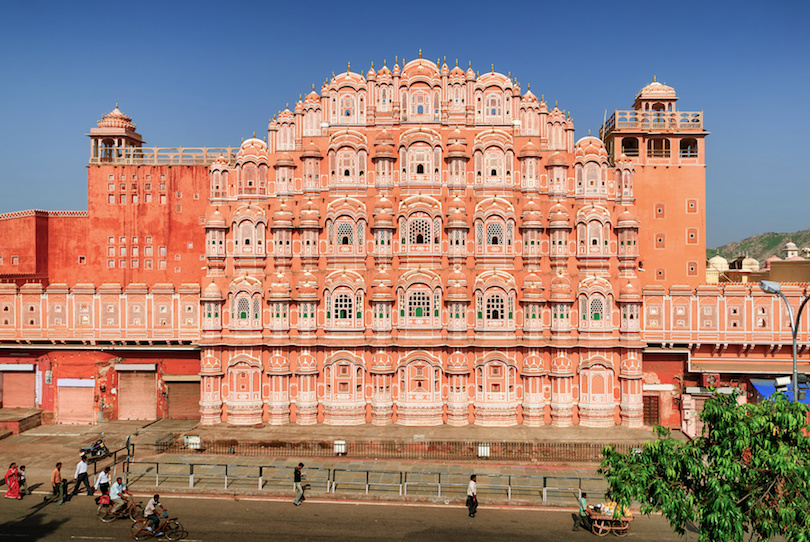
A stunning pick and red sandstone five-story structure stands in the heart of Jaipur. One of the city’s most popular tourist attractions, the Hawa Mahal has a unique purpose. Also known as the Palace of the Wind, it was a place where royal women could view street activities outside while hidden from view. To this end, the pyramid-shaped palace has 953 windows, each with an intricate design. Constructed in 1799, Hawa Mahal is considered an excellent example of Rajputana architecture.
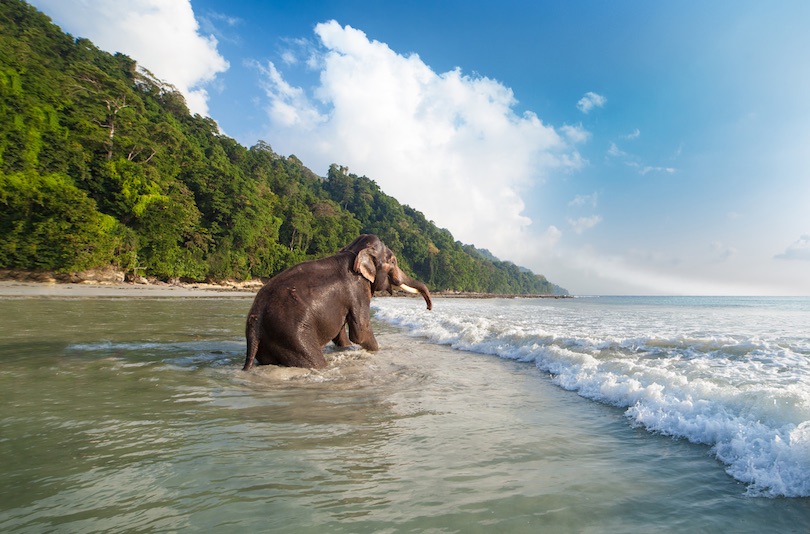
Ecotourism is encouraged at Havelock Island, the largest island in Ritchie’s Archipelago in the Andaman Islands. Though not as crowded as other islands in Asia, the number of visitors to Havelock Island is on the rise due to its great beaches, casual atmosphere, snorkeling and scuba diving opportunities. The best time to visit is mid-January to mid-May, when the weather is sunny with calmer seas. Redhanagar Beach is considered one of the best beaches in Asia.
 flickr/Mandala Travel
flickr/Mandala Travel
Seeing wildlife in its habitat is a goal for many travelers. A visit to Bandhavgarh National Park will not disappoint them. One of India’s most popular national parks, Bandhavgarh provides an opportunity to see leopards, barking deer, sloth bears, hyenas, and Indian bison and wolves, but Bengal tigers are definitely the star attraction, even though only 10 percent of visitors may see one. The best time to see wildlife here is early morning or late afternoon.

Dharamsala is the home away from home for the Dalai Lama who came here in 1959 after escaping from Tibet. The city also is the home to the Tibetan government in exile. Dharamsala means a spiritual dwelling or place for pilgrims to rest, which is appropriate since so many Tibetans live here. With advance planning, it may be possible to attend one of the Dalai Lamas public teaching sessions. Dharamsala is popular with hiking enthusiasts and travelers interested in yoga and Indian cooking lessons.
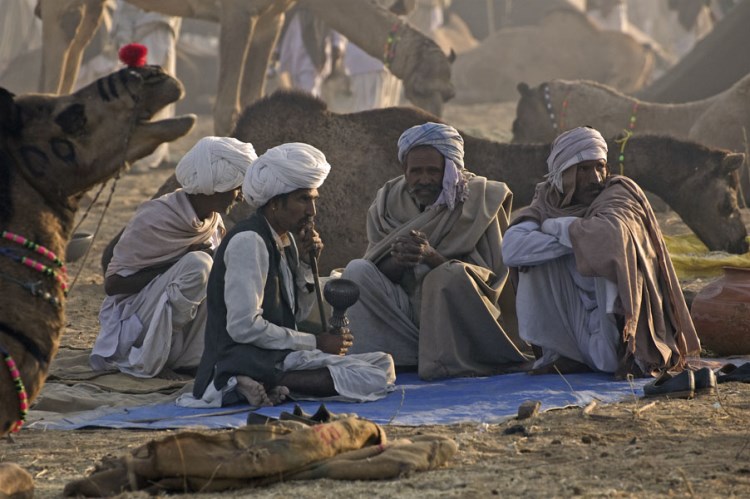 flickr/Koshyk
flickr/Koshyk
Visitors who want to take a camel home with them as a souvenir of their trip to India may want to attend the Pushkar Camel Fair. This two-week fall fair also is a good opportunity to buy other livestock, as more than 1,000 animals are bought, sold or traded, though camels are the main draw. Over the years, the fair has become more than just a place where farmers buy and sell livestock. It’s evolved into a full-scale festival that includes camel races, sports events, carnival rides and even moustache competitions.
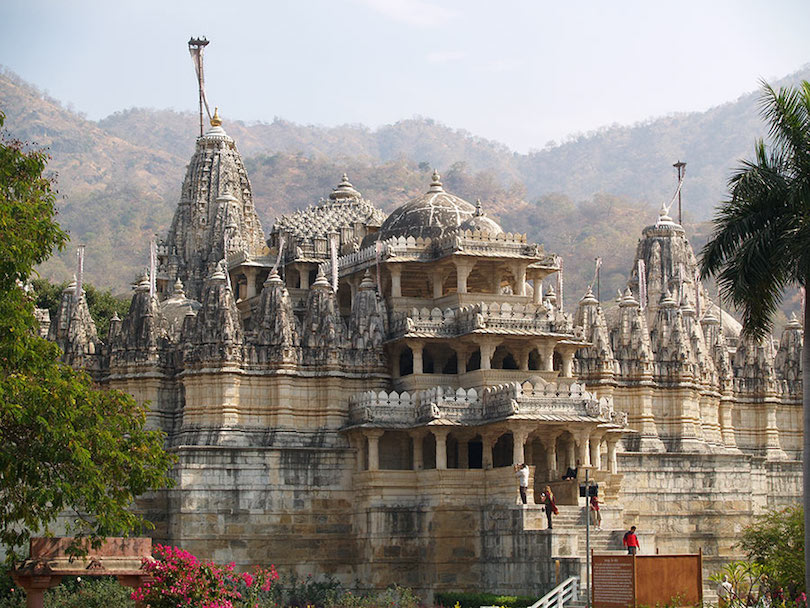 flickr/zz77
flickr/zz77
Ranakpur Temple is an imposing and highly decorative Jain temple that is famous for its art and architecture, considered some of the world’s best. Built in the 15th century, it took more than 50 years to construct the temple. One of the largest temples in India, Ranakpur Temple has 29 halls and 80 domes, but is really famous for its 1,444 pillars, of which each one is unique. Statues of deities top each dome. Extremely intricate carvings highlight the interior.
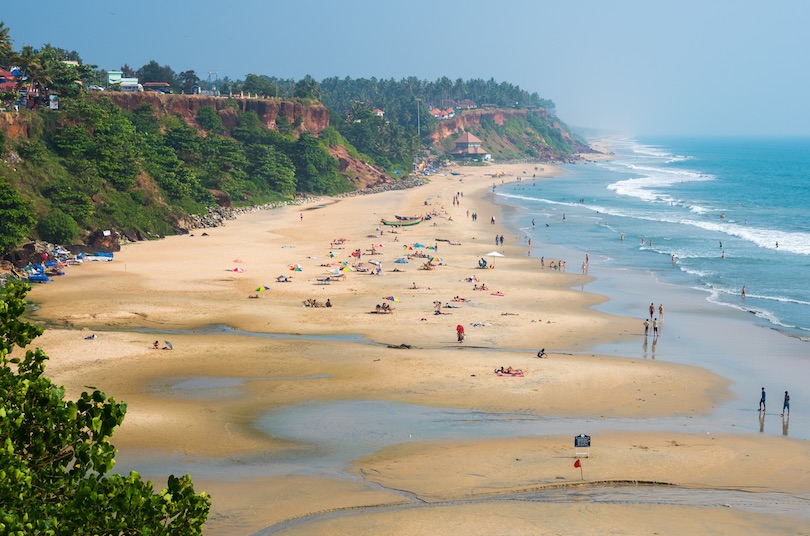
Varkala Beach is popular with travelers who just want to take a break from sightseeing for a while. Its sandy beaches along impressive cliffs are perfect for beachcombing, sunbathing and swimming, just some of the reasons Discovery channel named it one of the top 10 seasonal beaches in the world. It’s also known for its mineral springs; swimming in them is believed to heal ailments and purify one’s sins. Travelers who want to sneak in some sightseeing may enjoy a visit to Janardhana Swami Temple, a 2,000-year-old temple dedicated to Lord Vishnu.

Darjeeling is a town in northeast India that is famous for tea, trains and scenic beauty. Darjeeling tea is thin, light colored, aromatic and soothing to drink. The leaves are grown in the hills around the town. Farther up in the skyline, travelers can see the snow-covered peaks of the Himalayan foothills. Access is by a three-hour car ride from the nearest airport or a seven-hour journey on the Darjeeling Himalayan Railroad, a narrow gauge railway known as the “toy train.”
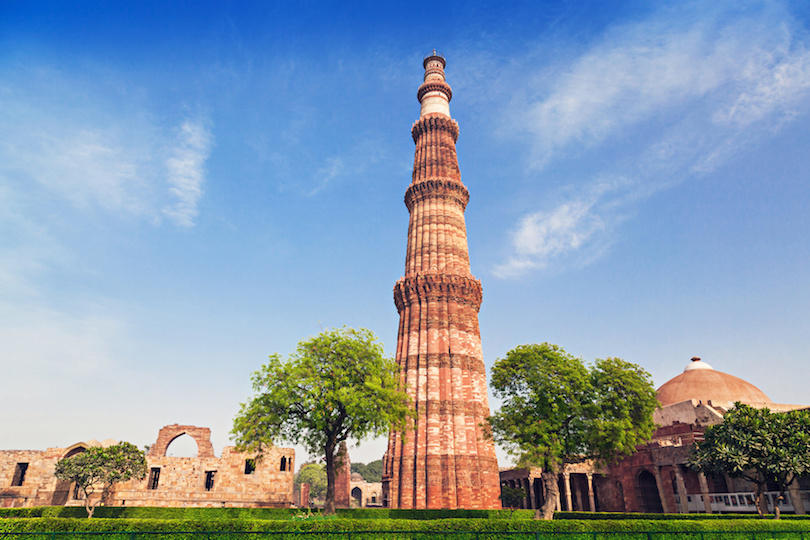
Qutb Minar is the second highest brick minaret in the world. The minaret, towering 80 meters (270 feet) into the sky, is made of marble and red sandstone bricks that are carved with sayings from the Koran. Construction took four years, starting in 1193. A circular staircase with 379 steps leads to the top; it is closed to visitors. Quwwat-ul-Islam Mosqueaa, the first mosque built in India, lies at the minaret’s foot. Nearby is the Iron Pillar, so named because it’s made from metals that don’t rust.
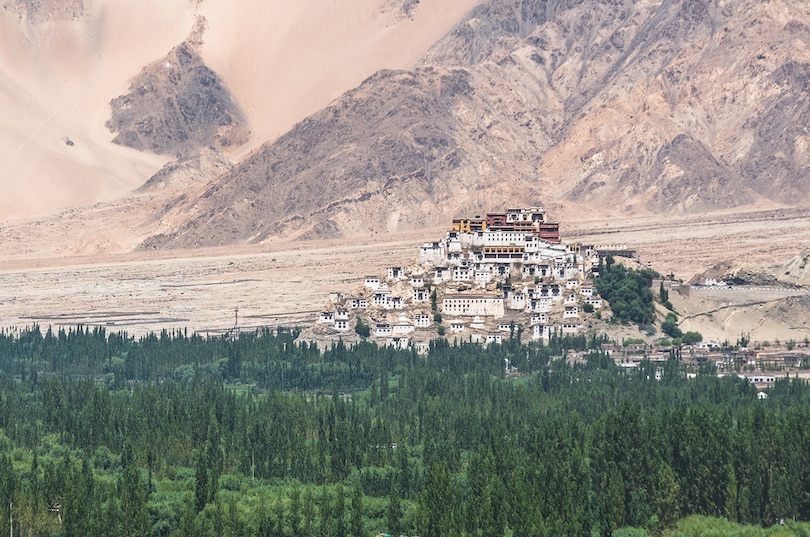
Travelers who’ve been to Tibet may think they’re seeing things when they look at Thikse Monastery. That’s because the 12-story building resembles the Potala Palace in Lhasa, only this Buddhist monastery is located in Ladakh, India. Like its Tibetan inspiration, it’s located at a high elevation: 3,600 meters (11,800 feet). Ladakh’s largest monastery also contains the tallest statue, a 14-meter (45-foot) high depiction of Maitreya, housed in a temple commemorating the visit of the Dalai Lama in 1970. Important Buddhist art, such as stupas and wall paintings, can be found here.
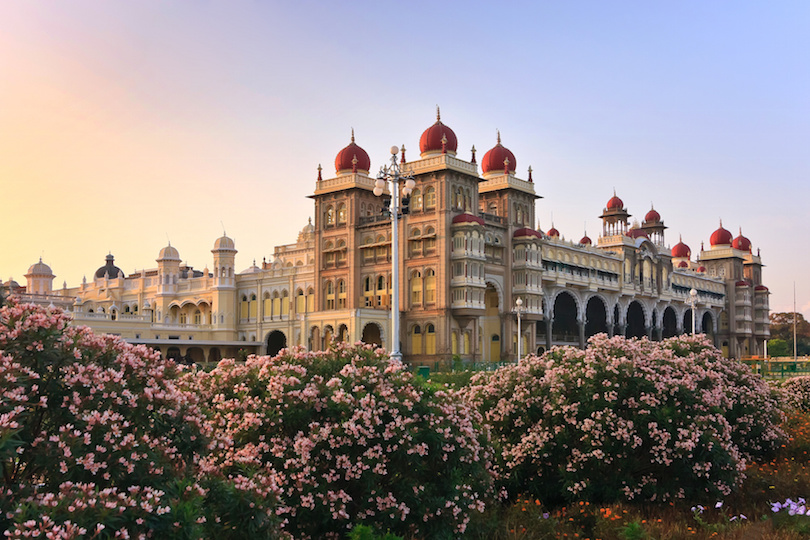
Visitors to Mysore Palace are in for an awesome experience at sthe second most popular tourist attraction in India. The seven palaces that make up the Mysore Palace complex are nothing short of spectacular. The Wodeyars ruled Mysore from 1399 to 1950. Their original palace was built in 1399, and the current palace was completed in 1912. The new palace is an amalgamation of Muslim, Hindu, Gothic and Raiput styles. Three stories high, it has deep pink marble domes and an ivory tower. The palace hosts an annual arts and culture festival, Dashara annually.
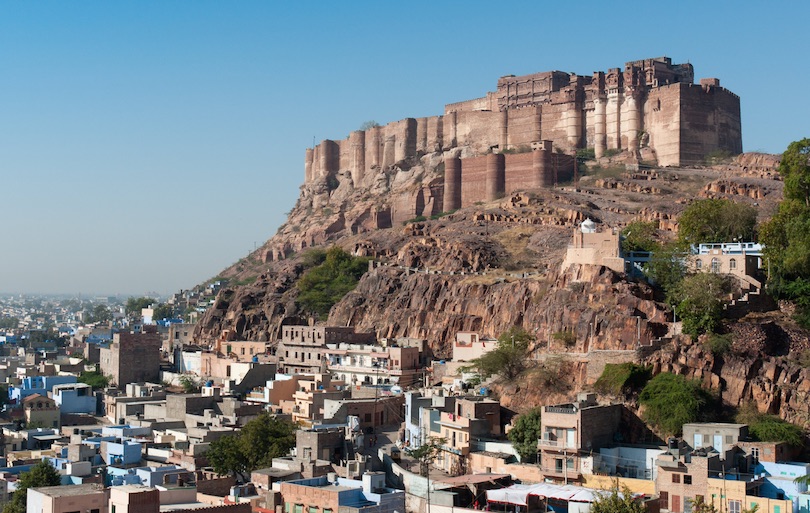
Mehrangarh Fort is a most imposing, a stern-looking fort, one of the largest in India, that sits atop a hill overlooking Jodhpur. Built in the mid-15th century as a defense mechanism, visitors can still see cannonball imprints on one of the seven entrance gates. Once inside the walls, visitors will find beautiful, highly decorated palaces. The fort’s museum has an excellent collection of palanquins, musical instruments, royal cradles and costumes. The ramparts, where an old cannon is located, provide splendid views of Jodhpur.
 wikipedia/curiouslog
wikipedia/curiouslog
Everyone loves to see animals in the wild. Jim Corbett National Park, India’s oldest national park, is a good place to see the endangered Bengal tiger. Established in 1936, the park was renamed in 1954 to honor Jim Corbett, author and wildlife conservationist, who helped create this nature reserve. Thick vegetation, including jungles and forest, make it difficult to see the tiger – April to June is best for that, but visitors may see other wildlife, including elephants, leopards, rhinoceros and Himalayan black bears.
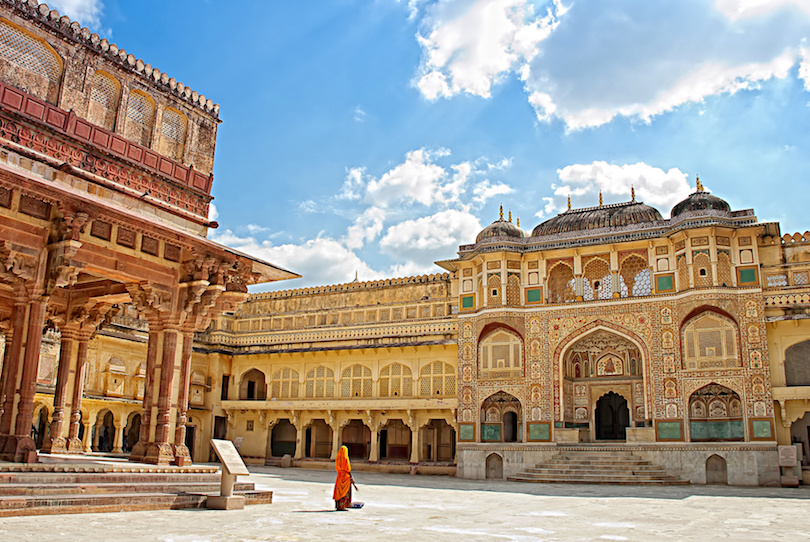
Amber Fort, the main tourist attraction around Jaipur, is known for its outstanding architecture. Sitting atop a hill, the complex is a blend of Hindu and Rajput styles. Built in the late 16th century, pink and red sandstone and marble structure has been featured in Bollywood films. It is most famous for the Mirror Palace, a fabulous room with a pure glass ceiling so the queen could view the stars before she fell asleep. Access is by foot, 4WD vehicle or elephant.
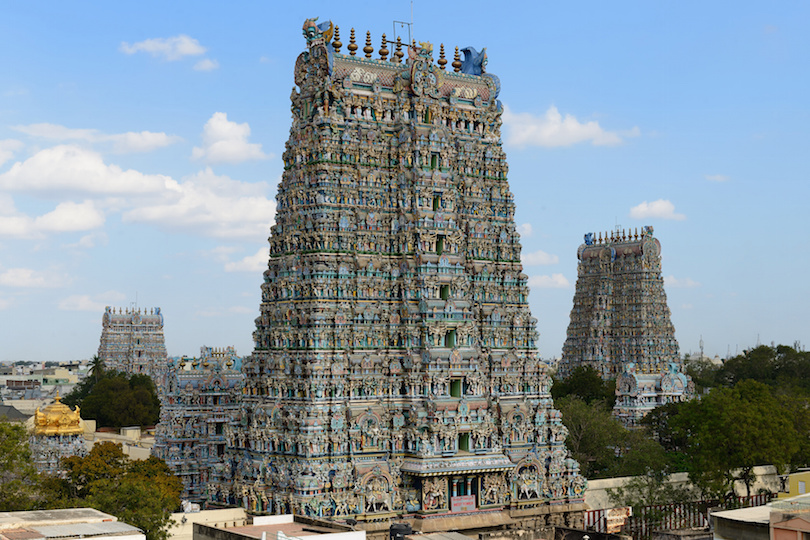
Meenakshi Amman Temple is an impressive Hindu temple that dates back to the sixth century, though most of the present structure was built a thousand years later. Located on the Vaigai River , it is perhaps the most important temple in Madurai, itself a 2,500-year-old city. Intricate carvings about inside and out; the temple has a total of 14 towers, each dedicated to a god or person. Some 33,000 sculptures as well as rich paintings can be found in the temple complex.
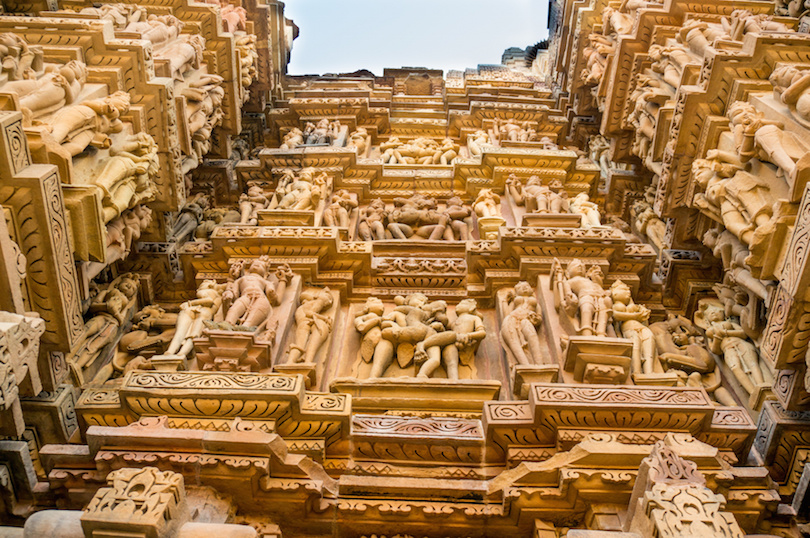
The Khajuraho group of temples combines art with eroticism, with the end result being some of the finest medieval temple art, not only in India, but the world. Built around the 10th century, only about 25 of the original 85 temples remain today. The largest group of Hindu and Jain temples in the world, the carvings and sculptures represent women’s traditional lifestyles in medieval times. The sculptures were created at a time, when erotic art was auspicious; some of the carvings are sexually explicit.
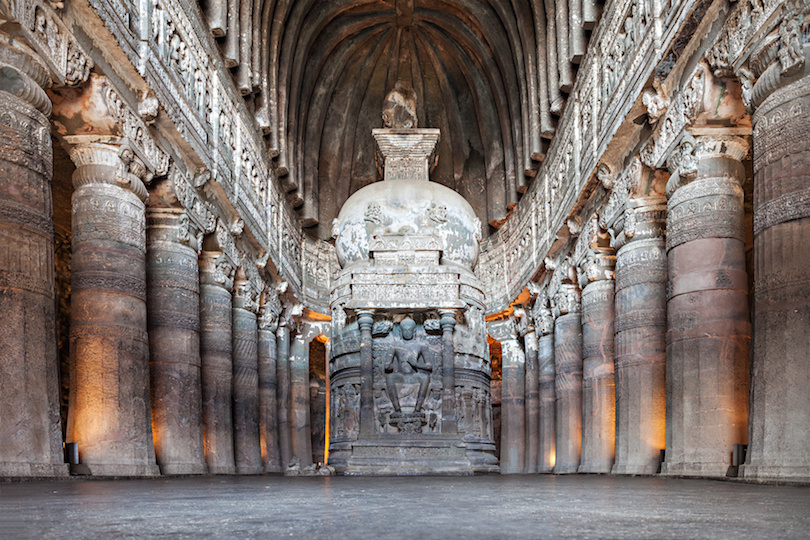
The Ajanta Caves are rock-cut cave monuments dating from the 2th century BC. The magnificent Ajanta caves were abandoned around 650 AD and forgotten until 1819, when a British hunting party stumbled upon them. Their isolation contributed to the fine state of preservation in which some of their paintings remain to this day. The well preserved murals depict everything from battlefields to sailing ships, city streets and teeming animal-filled forests to snow-capped mountains. The city of Aurangabad is the gateway to the Ajanta Caves as well as the equally spectacular Ellora Caves.

The Kerala backwaters are a chain of lagoons and lakes lying parallel to the Arabian Sea coast in the Kerala state. The Kerala backwaters are home to many unique species of aquatic life including crabs, frogs and mudskippers, water birds and animals such as otters and turtles. Today, houseboat tourism is the most popular tourist activity in the backwaters, with several large Kettuvallams (traditional rice boats, now converted into floating hotels)ply the waterways.
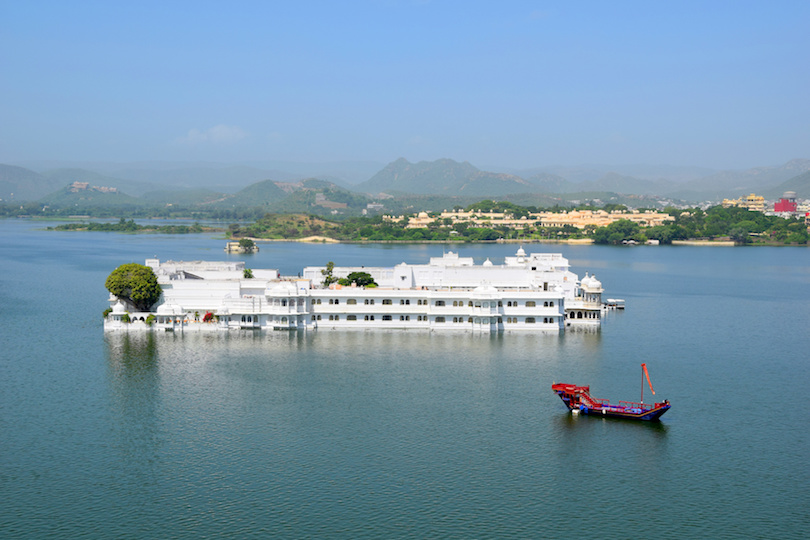
The Lake Palace in Lake Pichola in the city of Udaipur was built as a royal summer palace in the 18th century. Today it is a luxury 5 Star hotel, operating under the “Taj Hotels Resorts and Palaces”. The Lake Palace hotel operates a boat which transports guests to the hotel from a jetty at the City Palace on the east bank of Lake Pichola. The palace became famous in 1983 when it was featured in the James Bond film Octopussy, as the home of titular character.
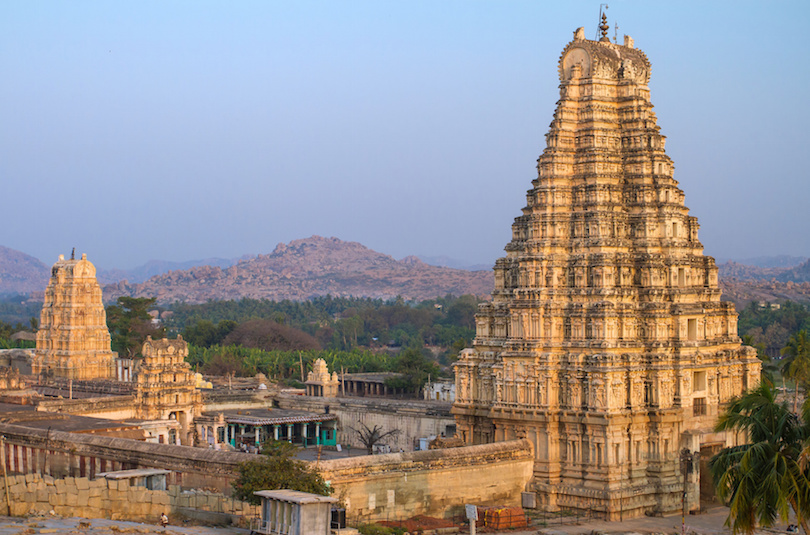
The Virupaksha Temple in the city of Hampi started out as a small shrine and grew into a large complex under the Vijayanagara rulers. It is believed that this temple has been functioning uninterruptedly ever since the small shrine was built in the 7th century AD which makes it one of the oldest functioning Hindu temples in India.
 flickr/abmiller99
flickr/abmiller99
Palolem is the most southerly of Goa’s developed beaches and also one of the most beautiful. It is a natural bay surrounded by lofty headlands on either sides, resulting in a calm, idyllic sea with a gently sloping bed. For those who believe a beach cannot be paradise without a decent selection of cheap restaurants and good hotels, a dose of nightlife and plenty of like-minded people Palolem is the place to be.
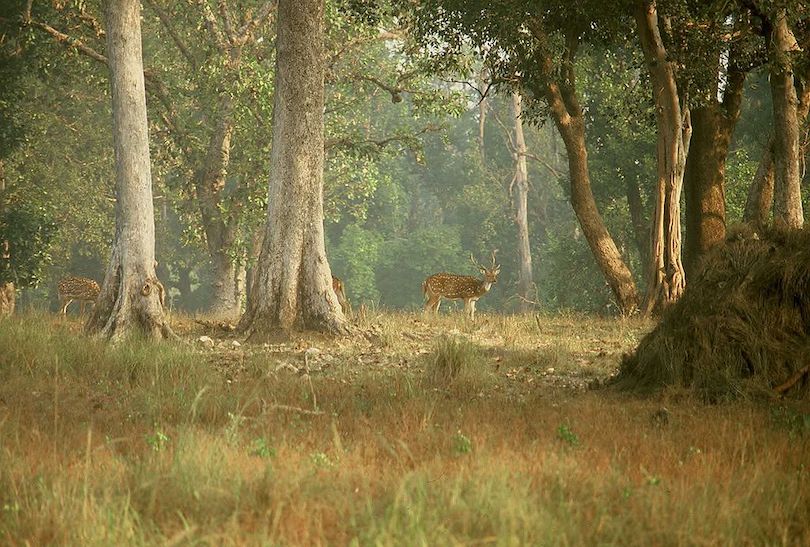
Kanha National Park is among the most beautiful wildlife reserves in Asia and one of best places to catch a glimpse of a tiger in India. The lush sal and bamboo forests, grassy meadows and ravines of Kanha provided inspiration to Rudyard Kipling for his famous novel “Jungle Book” and make this one of the top attractions in India.
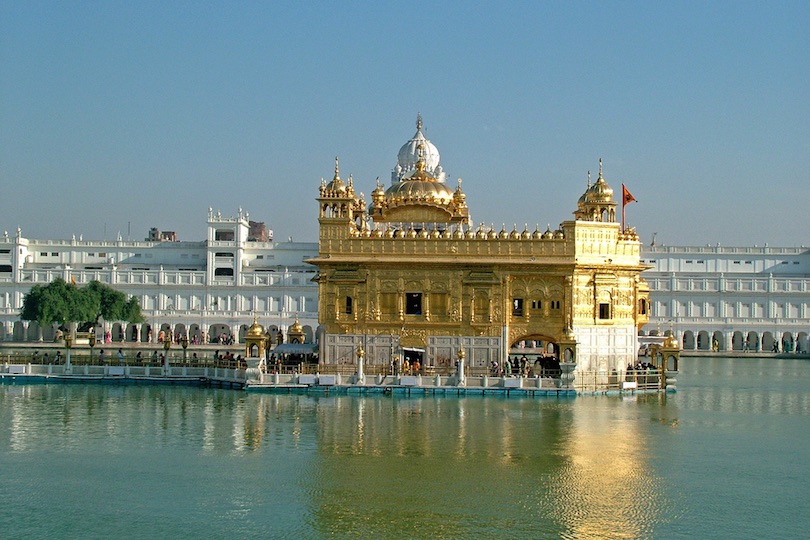 flickr/Guilhem Vellut
flickr/Guilhem Vellut
The Harmandir Sahib, better known as the Golden Temple is the main tourist attraction in Amritsar, and the most important religious place to the Sikhs. Construction of the temple was begun by Guru Ramdas ji. in the 16th century. In the 19th century, Maharaja Ranjit Singh the upper floors of the temple were covered with gold. It’s a stunning temple, and always full of thousands of pilgrims from all over India, excited to be at a place that they usually only see on television.
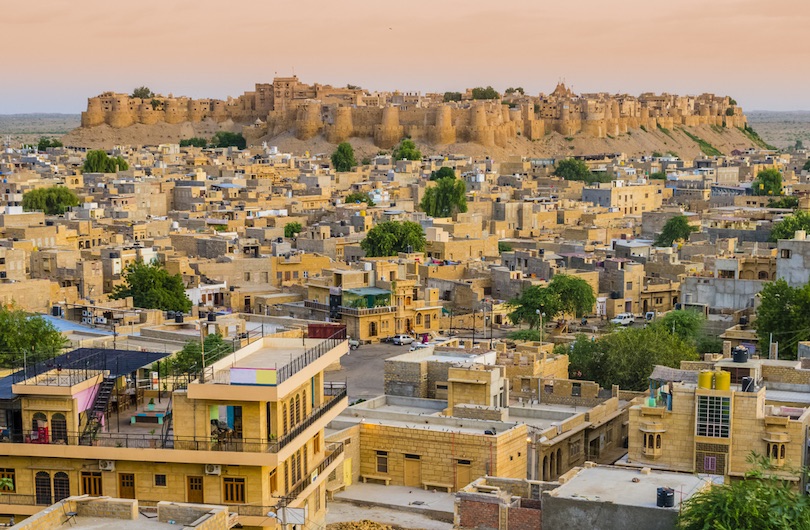
Located in Rajasthan’s remote westernmost corner close to the border with Pakistan, Jaisalmer is the quintessential desert town. The yellow sandstone walls of the “Golden City” rise from the Thar desert like a scene from the Arabian Nights while the Jaisalmer Fort crowns the city. Uncontrolled commercialism has dampened the romantic vision of Jaisalmer, but even with all the touts and tour buses, it remains one of the most popular tourist attractions in India.
 flickr/pichenettes
flickr/pichenettes
Cave art is taken to new heights at Ellora Caves, one of the largest monastery-temple cave complexes in the world cut from rock. Ellora has 100 caves, though only 34 are open to the public. The largest single monolithic rock excavation is found at the Kailasa Temple, which covers an area double the size of Parthenon in Athens Constructed between the seventh and ninth centuries, the caves are devoted to Hindu, Budhist and Jainism deities.
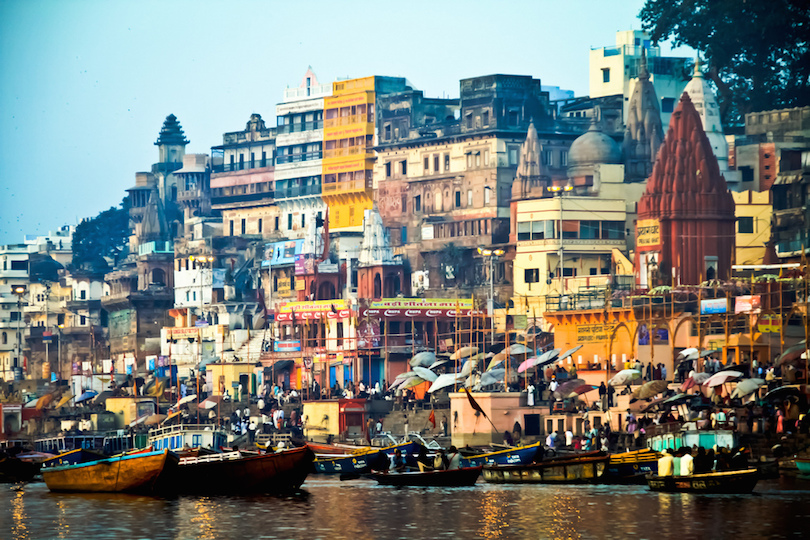 flickr/Nico Crisafulli
flickr/Nico Crisafulli
Situated on the banks of the River Ganges, Varanasi is sacred to Hindus, Buddhists and Jains and also one of the oldest continuously inhabited cities in the world. In many ways Varanasi epitomizes the very best and worst aspects of India, and it can be a little overwhelming. The scene of pilgrims doing their devotions in the River Ganges at sunrise set against the backdrop of the centuries old temples is probably one of the most impressive sights in the world.
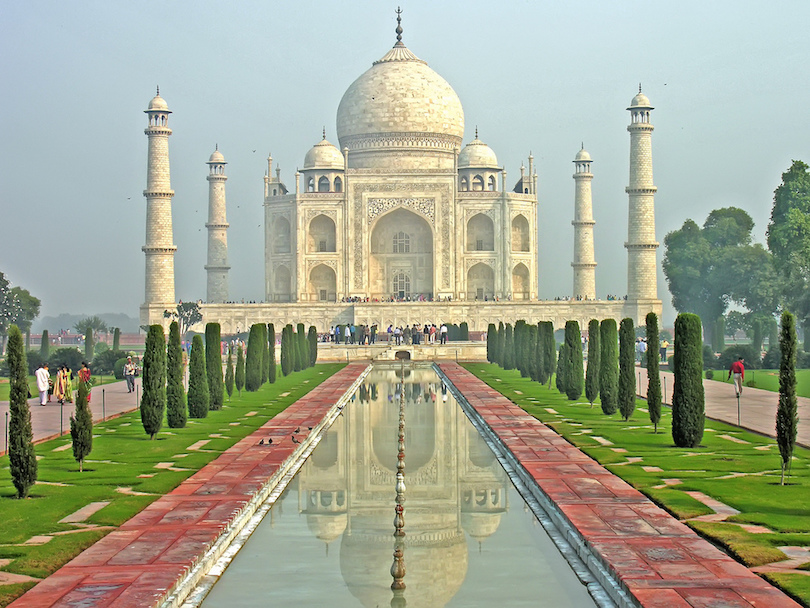 flickr/Dennis Jarvis
flickr/Dennis Jarvis
The Taj Mahal in Agra is an immense mausoleum of white marble, built between 1632 and 1653 by order of the Mughal emperor Shah Jahan in memory of his favorite wife. Called “a teardrop on the cheek of eternity” it is one of the masterpieces of Mughal architecture, and one of the great tourist attractions in India. Besides the white domed marble mausoleum the Taj Mahal includes several other beautiful buildings, reflecting pools, and extensive ornamental gardens with flowering trees and bushes.



Conceding that positive cases in Islamabad had dropped to eight per cent from 22 per cent in June 2020, Dr Muhammad Salman, a leading scientist and virologist at the National Institute of Health (NIH) Islamabad, said, “Nothing is known for sure how this novel coronavirus is behaving despite the fact that a lot of research has already been undertaken on it all around the world.”
ReplyDeletehttps://www.logicalbaat.com/
https://www.logicalbaat.com/
https://www.logicalbaat.com/
https://www.logicalbaat.com/
https://www.logicalbaat.com/
https://www.logicalbaat.com/
https://www.logicalbaat.com/
https://www.logicalbaat.com/